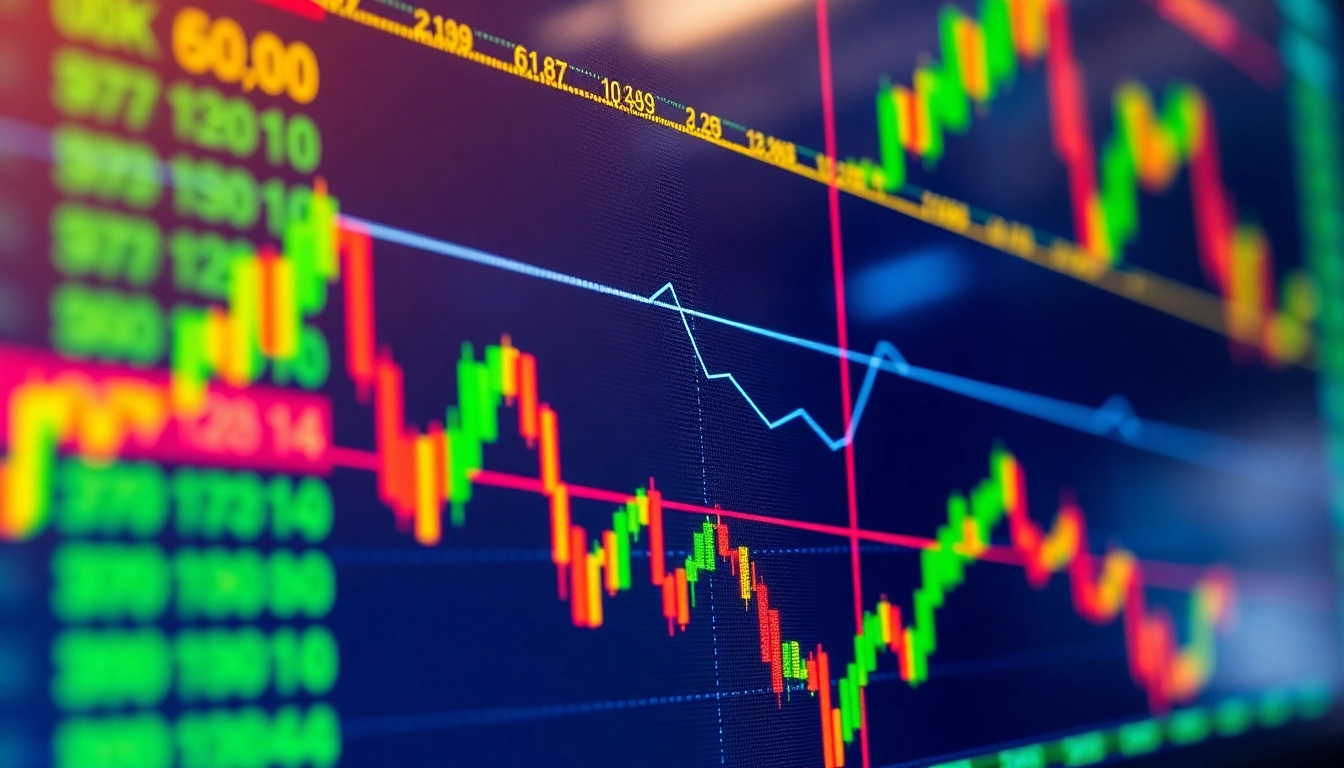Understanding the Current UK Trading Landscape
The UK trading environment is currently characterized by a complex interplay of global and domestic factors, creating a dynamic and often unpredictable market. Investors and traders are closely monitoring a range of indicators, from stock market performance to currency fluctuations, all influenced by ongoing geopolitical developments, economic data releases, and technological advancements. To stay ahead, market participants must have a comprehensive understanding of these trends and their implications. For an up-to-date overview of these movements and insights, visit UK Trading Updates.
Recent Market Trends and Indicators
Recent UK market activity reveals a landscape marked by volatility and cautious optimism. Major indices such as the FTSE 100 have shown marginal gains, driven largely by resilience in key sectors like financials and mining. Notably, the FTSE closed higher, buoyed by banking stocks, which recovered from recent dips amid fears of economic slowdown. Meanwhile, gold prices surged to record highs, breaching $3,500 per ounce—its highest in recent history—signaling increased investor demand for safe-haven assets amidst uncertain geopolitical conditions.
Key indicators such as inflation rates, employment figures, and manufacturing output continue to influence market sentiment. Recent U.S. labour data pointed to a resilient job market, which affected currency markets, notably the sharp decline in the dollar, dropping slightly ahead of upcoming employment reports. Meanwhile, commodity markets experienced shifts as oil prices dipped but remained poised for weekly gains, reflecting global supply-demand dynamics and geopolitical tensions in major producing countries.
Impact of Global Economic Factors on UK Markets
The UK stock market does not operate in isolation; it is significantly impacted by global economic developments. Trade tensions, notably between major economies like the US and China, continue to influence commodity prices and investor confidence. For example, the persistent trade dispute has contributed to weak Chinese data, which led to a slip in iron ore futures and affected mining stocks listed on the FTSE.
Furthermore, U.S. Federal Reserve policies and rate expectations exert considerable influence. The recent focus on potential rate cuts spurred optimism in Asian markets, which in turn supported UK equities with rising Asian currencies trading marginally higher. Conversely, political uncertainties and economic sanctions have added layers of risk, prompting investors to diversify portfolios across sectors such as technology, resources, and financial services.
Analyzing UK Stock Market Performance
UK equities have demonstrated a mixed but resilient performance in the face of global headwinds. The FTSE 100, as a bellwether, experienced a slight rebound as investors bet on continued economic stability and corporate earnings resilience. Sector-specific movements reveal that defensive stocks, including defense and utilities, underpinned the gains, while growth sectors faced pressure from macroeconomic uncertainties.
Technology and financial sectors have become focal points. Companies like Meta are exploring strategic partnerships to enhance their apps’ integration with AI, which could boost future profitability. Meanwhile, reinsurance broker London Re launched its Delhi entity, signifying increasing international exposure and diversification in the UK market landscape. Such moves are crucial for investors seeking growth opportunities amid rising risks.
Key Sectors Driving UK Trading Activity
Financial and Banking Stocks in Focus
The financial sector remains a cornerstone of UK trading activity. Recent developments include the Bank of England issuing warnings to Facebook regarding the UK launch of the Libra cryptocurrency, emphasizing regulatory scrutiny. British banks, including Barclays, are also poised to benefit from fintech innovations and increased digital banking adoption. The sector’s resilience is vital for overall market stability, especially as investors closely watch interest rate movements and fiscal policy changes.
Commodity and Resource Sector Updates
The commodities sector has seen notable activity, with gold reaching an all-time high of $3,501.59 per ounce. Gold’s surge reflects investor strategies to hedge against inflation and geopolitical risks. Meanwhile, oil prices declined slightly but are set to post weekly gains, driven by supply constraints and US-China trade negotiations. The metals and energy sectors remain sensitive to global economic cues, with new data on Chinese manufacturing contributing to market adjustments.
Emerging Technologies and Innovative Players
Technological innovation continues to reshape UK trading landscapes. Meta Platforms is aggregating external AI models into internal tools, signaling a shift toward smarter, data-driven decision-making. Similarly, market participants are increasingly betting on cryptocurrencies, with Bitcoin and Ether maintaining stability amid regulatory developments. These innovations present both opportunities and risks, necessitating careful analysis and strategic positioning.
Gold and Currency Market Movements
Gold Price Records and Influences
Gold has undoubtedly been the standout performer, hitting a new record of $3,501.59 ounce, surpassing previous highs from April. Its rise is attributed to a combination of US inflation concerns, geopolitical tensions, and a weakening dollar. Gold’s appeal as a safe haven remains robust, especially with ongoing uncertainties surrounding global trade and potential rate cuts by the Fed.
Currency Fluctuations and FX Market Insights
The forex market exhibited notable shifts, with the dollar experiencing a slight decline of 0.04% against the yen amid hopes of a US interest rate cut. The euro appreciated marginally to $1.1710, supported by positive European economic data and decreased dollar strength. The Australian dollar also gained, reflecting a cautious risk appetite among traders.
These fluctuations influence international trade and commodities prices. A weaker dollar generally benefits UK exporters, while currency volatility necessitates strategic hedging for traders involved in forex and cross-border transactions.
Strategies for Navigating UK Trading Updates
Risk Management and Diversification Tips
Effective risk management is crucial amidst volatile markets. Diversification across sectors—such as resources, technology, and financials—can mitigate risks associated with sector-specific downturns. Investors should consider using stop-loss orders and hedging strategies to protect gains and limit potential losses.
Utilizing Market Reports for Better Decisions
Market intelligence, including comprehensive reports on earnings, macroeconomic data, and geopolitical developments, empowers better decision-making. Staying updated with platforms providing real-time UK trading updates facilitates agility in responding to market shifts and capitalizes on emerging opportunities.
Upcoming Economic Events and Data Releases
Anticipate critical upcoming data such as UK inflation figures, employment reports, and Bank of England monetary policy statements. These releases will shape market expectations and influence trading strategies. Timely analysis of these indicators can provide a competitive edge.
Future Outlook and Potential Market Drivers
Forecasts for the UK Economy and Markets
Projections suggest a cautiously optimistic outlook for the UK economy, balancing potential growth with ongoing geopolitical uncertainties. If UK and EU trade relationships stabilize, markets could see renewed momentum. Conversely, persistent inflation and global tensions may lead to increased volatility.
Emerging Opportunities and Risks
The ongoing shift toward technological innovation, sustainable energy, and digital currencies presents promising avenues for investors. However, regulatory risks, geopolitical conflicts, and market corrections remain persistent threats. Vigilant analysis and proactive risk mitigation are vital for capitalizing on these opportunities.
How to Stay Informed with UK Trading Updates
Regularly consulting trusted sources, including official economic reports, financial news platforms, and expert analyses, enhances awareness. Engaging with real-time updates and employing analytical tools will enable traders to adapt swiftly to market changes and optimize their investments.



